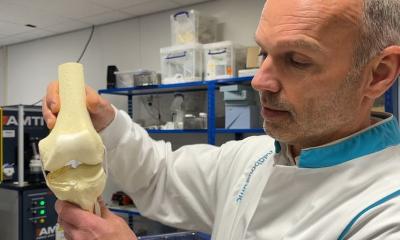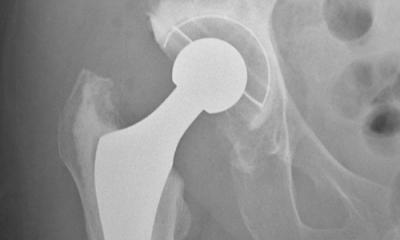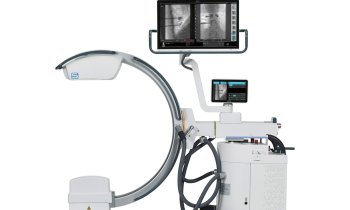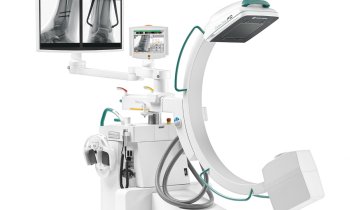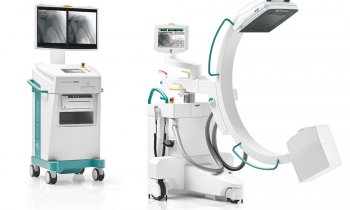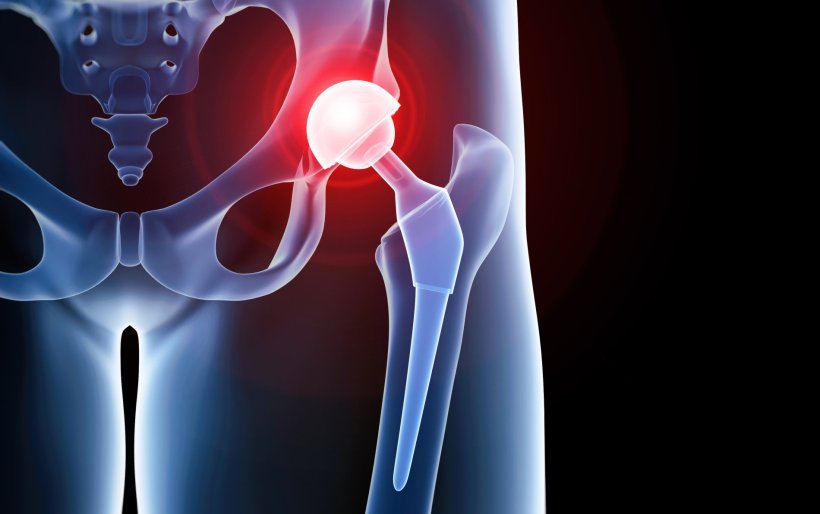
© Sebastian Kaulitzki – stock.adobe.com
News • Planning of implant positioning
Force sensor to improve hip replacement surgery
Technology that could transform the future of hip replacement surgery is being pioneered by a team of experts in Cambridge.
They have just won an award to develop their technology, which aims to make hip surgery more precise and deliver better and longer-lasting outcomes – which is good for patients and the NHS. The National Institute for Health and Care Research (NIHR) has awarded a £1.4 million Invention for Innovation (i4i) Product Development Award to advance work on the team’s “smart” joint “trial liner”.
The sensors measure forces passing through the hip joint to help the surgeon assess and balance the soft tissues, which aids the accurate positioning of the implant. Once measurements are complete using the wireless surgical aid, the surgeon marks the ideal position for the implant, removes the smart trial liner, and completes the operation.
There are currently no technologies that can deliver such readings during an operation and in real-time, and instead surgeons balance the joint based on feel and anatomical landmarks. This is despite over two million total hip replacements being performed annually, with the number constantly rising due to increasing lifespans. Younger patients are starting to need hip replacements as well, so implants need to withstand higher stresses and last longer, to avoid spiralling into a vicious circle of revision surgery and higher rates of dissatisfaction.
Driving this clinical initiative is the chief investigator from Cambridge University Hospitals (CUH) NHS Foundation Trust, Consultant orthopaedic surgeon, clinical and research lead of the Young Adult Hip Service, and Affiliate Associate Professor at the University of Cambridge Vikas Khanduja.

Image source: Cambridge University Hospitals
The technology development is being overseen by Professor Sohini Kar-Narayan from Cambridge’s Department of Materials Science and Metallurgy, together with Dr Jehangir Cama, who is leading on translational and commercialisation activities. They are joined by Consultant clinical scientist and CUH head of clinical engineering, Professor Paul White. “We’re really looking forward to this next phase of product development that will see us move towards an actual product that is fit for clinical use, and that has the potential to revolutionise joint replacement surgery,” said Kar-Narayan. “This funding will bring together wide-ranging expertise to help us further develop our prototype, bringing this technology closer to clinical use,” said Cama.
The team currently has a prototype version of the device, which has been validated in the laboratory and in other tests. However, the NIHR award is important for further development and finalisation of the design and compliance with regulations before it can be tested in a living patient.
The team’s underlying sensor technology intellectual property has been protected via a patent application filed by Cambridge Enterprise, the University’s commercialisation arm. “This is a fantastic example of Cambridge’s entrepreneurial clinicians, academics and their institutions working together with forward-looking funders to create a positive impact for markets, society and importantly patients,” said Dr Terry Parlett, Commercialisation Director at Cambridge Enterprise.
Source: © University of Cambridge (CC BY-NC-SA 4.0); adapted from a CUH press release
19.09.2024




